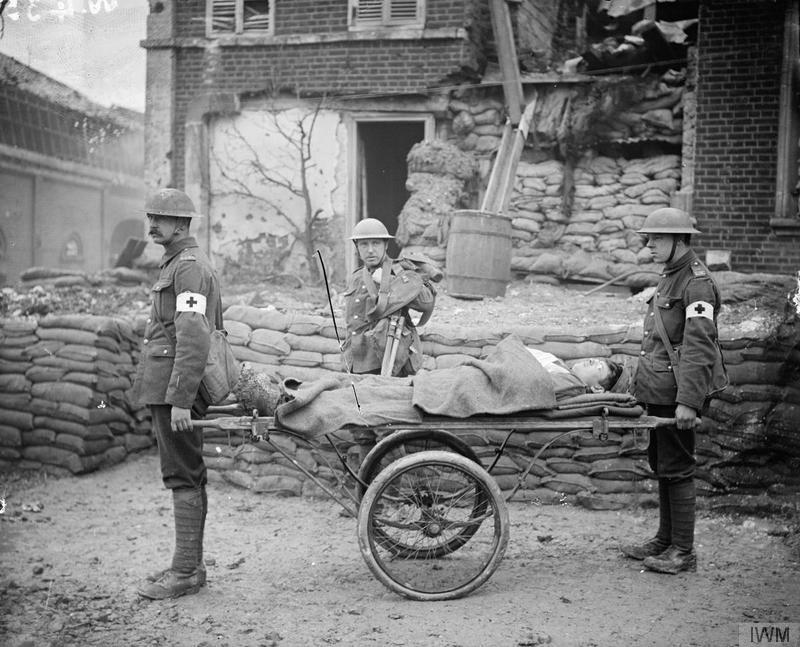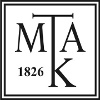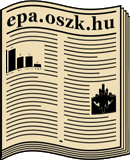Public health challenges in the military operational areas of the Great War
DOI:
https://doi.org/10.15170/PAAA.2018.05.02.03Keywords:
science history, medical history, health care, microbiology, infectious disease, prophylaxis, World War IAbstract
Introduction
While the previous „killed in action/wounds” vs. „died in diseases” ratio made a full turn in the First World War, copying the trends of the 1904–5 Russo-Japan war, the infectious diseases remained to be the main medical and financial resource drains and threats. The present paper, based on secondary and tertiary sources attempts at drawing a representative overview of the main topics of battlefield hygiene, sanitation and prophylactic measures.
Infectious diseases
Cause of tuberculosis, anthrax, typhus, typhoid, dysenteria, syphilis, gonorhhea, variola vera, cholera and many more were catched by the microscopes of the microbiologists. Vaccination was highly effective, which nearly eradicated the disease. Typhoid is caused by Salmonella with a mortality between 10–51%. Dysenteria is a mixed diagnosis with different bugs amoebas and viruses as their potential causes leading to death in 1–10 cases out of 100. Malaria was an enemy mainly in the near-East and in the African battlefields, affecting signoficantly the Ottoman forces. Trachoma, infectious disease of the eye was not a killer, but a non-negligible factor for loss of fighting power.
Tuberculosis, veneral diseases and Spanish Influenza were other infectious diseases, to list here. Tuberculosis, the White Death was the main diagnosis in all WW1 armies.
Prophylaxis: vaccination
Many vaccines against infectious diseases were already at hand at the start of WW1, however their efficacy and side effects varied quite widely. Inoculation against cholera and typhoid worked well, while polyvalent solutions agains dysenteria were less effective.
Sanitation and prophylactic tasks of the medical services of the opposing armies
Water
Providing good quality drinking water is dictated by the fact, that generally speaking 12–24 hours of fluid deprivation seriously diminishes the fighting capabilities. Apart from the volume, the quality of the water is decisive. Boiling the water and purifying it by mechanical (filtering) /chemical means were offered as solutions.
Sewage
The prewar military medical handbooks provided detailed plans for the management of the vastewater, which chapters did not survive the first shots. Instead of straight forward condemnation, vastewater management situation in particular and general hygiene on the fronts must be measured in context of contemporary public health standards in the first decade of the 20th century.
Public/military waste material management
Burning was the simplest and the most generally pracised method of waste management, Different chemicals were also applied, mainly for cleaning of reusable contaminated hospital materials.
Food hygiene
Prewar public hygiene provided proper guidelines for food quality and quantity. As the time passed by, the quality and the quantity of the food diminished, in parallel with the shortages in the hinterland of all participants.
Air
Air quality was a „given” – and usually quite bad, especially in the close vicinity of the frontlines. Face masks might provided some sort of protection. Chemical weapons – gas-war – contributed to the development of ventilators, respirators.
Animals
Mobility of the opposing armies in the WW1 were dependent on working animals; horses, oxens, mules etc… Some of the local epidemics were connected to these animals. Other animals, like military dogs or pigeons accompanied the soldiers, who preferred the pets. Their role as rat-killers, mouse chasers gas-attack signallers, and moral boosters were high.
Personal hygiene
This was a double-faced topic: as moral (discipline) and santitation factors were intermingled. The uniforms were boiled and hot water was the main medium. Bodily hygiene had its main importance – apart from the subjective comfort – in the fight against the causative bugs: plague and actual wound infection as well.
Burial of the dead
That was not only an important prewar military medical handbook chapter, but a highly crucial element in the mental health and moral strength factor.
Conclusion
Public health, similar to other brands of medicine and surgery saw a paradigm shift in the mass killing fields of the Great War between 1914 and 1918 and beyond. Microbiology was the main facilitator of the progress and mass observations and their analysis provided gamechanger steps in medicine. The impending antibiotic resistance Armageddon should redirect us back to the methods of our surgeon-grandfathers who fought with infected wounds in the pre-antibiotic era.
Downloads
References
Allen, Ann Taylor: Feminism, Venereal Diseases, and the State in Germany, 1890–1918. Journal of the History of Sexuality (1993):4/1. 5047–5048. || [WoS] https://www.webofscience.com/wos/woscc/full-record/WOS:A1993LJ85900002
Atenstaedt, Robert L.: The Medical Response to the Trench Diseases. Cambridge, 2011. (http://www.cambridgescholars.com/download/sample/60974) [2018.08.21.]
Bailey, M. S.: A brief history of British military experiences with infectious and tropical diseases. Journal of the Royal Army Medical Corps 159. (2013):3. 150–157. || [DOI] https://doi.org/10.1136/jramc-2013-000087 || [WoS] https://www.webofscience.com/wos/woscc/full-record/WOS:000323508200004
Bernstein, Frances L.: Envisioning Health in Revolutionary Russia. The Politics of Gender in Sexual Enlightenment Posters of the 1920s. Russian Review 57. (1998):2. 191–217. || [DOI] https://doi.org/10.1111/0036-0341.00018 || [WoS] https://www.webofscience.com/wos/woscc/full-record/WOS:000072662900002
Bíró Ede: Katonai egészségtan a M. Kir. Honvéd Orvosi Alkalmazó Iskola hallgatói számára. Budapest, 1911.
Bonilla, D. L. et al.: Bartonella quintana in body lice and head lice from homeless persons, San Francisco, California. Emerging Infectious Diseases 15. (2009):6. 912–915. || [DOI] https://doi.org/10.3201/eid1506.090054 || [WoS] https://www.webofscience.com/wos/woscc/full-record/WOS:000266539100009
Byam, William: Transmission of trench fever by the louse. British Medical Journal (1918):1. 354–355. || [DOI] https://doi.org/10.1001/jama.1918.26020270005007a
Carruthers, V. T.: The causes of trench-foot. Lancet (1917):2. 537. || [DOI] https://doi.org/10.1016/S0140-6736(01)48099-8
Doyle, Peter – Bennett, Matthew R.: Terrain and the Gallipoli Campaign, 1915. In: Fields of Battle. Ed. Doyle, P. – Bennett, M. R. Dordrecht, 2002. 149–169. || [DOI] https://doi.org/10.1007/978-94-017-1550-8_11
Drolet, Godias J.: World War 1 and tuberculosis. A statistical summary and review. American Journal of Public Health and the Nations Trust 35. (1945):7. 689–697. || [DOI] https://doi.org/10.2105/AJPH.35.7.689 || [WoS] https://www.webofscience.com/wos/woscc/full-record/WOS:000206437000003
Eghigian, Greg: The First World War and the Legacy of Shellshock. Psychiatric Times 31. (2014):4. xx-íí. (http://www.psychiatrictimes.com/history-psychiatry/first-world-war-and-legacy-shellshock) [2018.07.11.]
Erdem, Hakan – Tetik, Ahmet – Arun, Ozgur – Besirbellioglu, Bulent Ahmet – Coskun, Omer – Eyigun, Con Polat: War and infection in the pre-antibiotic era: the Third Ottoman Army in 1915. Scandinavian Journal of Infectious Diseases 43. (2011):9. 690–695. || [DOI] https://doi.org/10.3109/00365548.2011.577801 || [WoS] https://www.webofscience.com/wos/woscc/full-record/WOS:000293913800003
Erkoreka, A.: Origins of the Spanish influenza pandemic (1918–1920) and its relation to the First World War. Journal of Molecular and Genetic Medicine (2009):3. 190–194.
Findel, H. – Bischoff, H.: Lehrbuch der Militärhygiene. I. Band. Wärmeregulierung des Körpers. (Luft, Kleidung, Klima). Ernährung. Berlin, 1910.
Forrai Judit: A bujakór története. Rubicon 21. (1998):6. (http://www.rubicon.hu/magyar/oldalak/a_bujakor_tortenete/) [2018.08.20.]
Franz Géza: A húskonzervekről. Honvédorvos 4. (1932):1–3. 19–26.
Gibson, K. Craig: Sex and Soldiering in France and Flanders. The British Expeditionary Force along the Western Front, 1914–1919. The International History Review 23. (2001):3. 535–579. || [DOI] https://doi.org/10.1080/07075332.2001.9640940 || [WoS] https://www.webofscience.com/wos/woscc/full-record/WOS:000171244600002
Ginn, Richard: US Army Medical Department Office of Military History World War I. Washington D. C., 1997.
Gottl Jenő – Mojzer László: Hadseregünk ellátása a világháborúban (1914–1918). Különös tekintettel a hadra kelt sereg élelmezésére. I–IV. Debrecen – Budapest, 193?
H-14. szabályzat a M. Kir. Honvédség egészségügyi szolgálatára. IV. rész. Egészségügyi szolgálat háborúban. Budapest, 1905.
H-14. szabályzat a M. Kir. Honvédség egészségügyi szolgálatára. I. rész. Egészségügyi szolgálat a honvéd hatóságok, parancsnokságok csapatoknál és honvédségi intézeteknél. Budapest, 1916.
Haller, J. S.: Trench foot – a study in military-medical responsiveness in the Great War, 1914–1918. Western Journal of Medicine (1990):152. 729–733. || [WoS] https://www.webofscience.com/wos/woscc/full-record/WOS:A1990DJ97200029
Harrison, M.: The British army and the problem of venereal disease in France and Egypt during the First World War. Medical History (1995):39. 133–158. || [DOI] https://doi.org/10.1017/S0025727300059810 || [WoS] https://www.webofscience.com/wos/woscc/full-record/WOS:A1995QX34200001
Hasek, Jaroslav: Az elhagyott latrinán. In: Hasek, Jaroslav: Az elhagyott latrinán. Budapest, 1969. 28–30.
Herzog, Dagmar: Sexuality in Europe. A Twentieth-Century History. Cambridge, 2011.
Hunt, G. H. – Rankin, A. C.: Intermittent fever of obscure origin occurring among soldiers in France. The so-called trench fever. Lancet (1915):2. 1113–1116. || [DOI] https://doi.org/10.1016/S0140-6736(01)56056-0
Kapronczay Károly (összeáll.): Háború és orvoslás. Az I. világháború katonaegészségügye, annak néhány előzménye és utóélete. Orvostörténeti tanulmányok. Budapest, 2015. (Magyar Tudománytörténeti Szemle Könyvtára 105.)
Kapronczay Károly – Kapronczay Katalin (összeáll.): Az I. világháború magyar orvosi emlékeiből. Naplók, kéziratos visszaemlékezések, szakcikkek. Budapest, 2016. (Magyar Tudománytörténeti Szemle Könyvtára 113.)
Keys, Jr., E. L.: The Management of Venereal Diseases by the United States War Department during the past Two Years. The Public Health Journal 10. (1919):6. 254–265.
Kirchner, C.: Lehrbuch der Militär-hygiene. Stuttgart, 1877.
Kiss Gábor: Fertőzéses megbetegedések az osztrák–magyar hadseregben az első világháború idején. Orvostörténeti Közlemények 41. (2010):1–4. 197–203.
Kiss László: A nemi betegségek története Magyarországon a 19. századtól a második világháborúig. Magyar Epidemiológia (2005):2. 107–112.
Koontz A. R.: War gases and tuberculosis. Archives of Internal Medicine (1927):639. 833–864. || [DOI] https://doi.org/10.1001/archinte.1927.00130060085008
Kováts Áron: A betegek és sebesültek gondozása háborúban. Értesítő az Erdélyi Múzeum-Egyesület Orvostudományi Szakosztályától 39. (1914):36. 224–237.
Krzysztalowicz, Franz von: Zur Frage der Vorbeugung der venerischen Erkrankungen in der Armee. Der Militärarzt 9. (1915):6. 89–92.
Le Naour, Jean-Yves: Le Sexe et La Guerre: Divergences Franco-Américaines pendant la Grande Guerre (1917–1918) Guerres Mondiales et Conflits Contemporains 197. (2000):Mars 103–116. || [WoS] https://www.webofscience.com/wos/woscc/full-record/WOS:000167622300009
Lechevalier, Hubert Arthur – Solotorovsky, Morris: A mikrobiológia három évszázada. Budapest 1975.
Az Összoroszországi Központi Végrehajtó Bizottságnak és a Népbiztosok Tanácsának beszámolója. December 5. In: V. I. Lenin összes művei. 30. köt. Budapest, 1953. 197–223.
Long, E. R.: The war and tuberculosis. American Review of Tuberculosis 45. (1942) 616–636.
Makepeace, Clare: WWI Brothels. Why Troops Ignored Calls to Resist ‘Temptation’. BBC News, 27. February 2014. (http://www.bbc.com/news/uk-england-25762151) [2018.08.20.]
Merker et al.: Evolutionary history and global spread of the Mycobacterium tuberculosis Beijing lineage. Nature Genetics 47. (2015):3. 242–249. || [DOI] https://doi.org/10.1038/ng.3195 || [WoS] https://www.webofscience.com/wos/woscc/full-record/WOS:000350327900015
Molnár F. Tamás: Háborúk és orvoslás. A háború mint endémiás trauma. In: Történeti egészségtan. Szerk. Ember István – Molnár F. Tamás – Varga Csaba. Budapest–Pécs, 2010. 176–185.
Molnár F. Tamás: Tömeges betegségek és társadalmi következményeik. In: Történeti egészségtan. Szerk. Ember István – Molnár F. Tamás – Varga Csaba. Budapest–Pécs, 2010. 64–72.
Molnár F. Tamás: Epidémiák és történeti fordulópontok, epidémiák hatása a történelem menetére; járványok és politikai, katonai következményeik. In: Történeti egészségtan. Szerk. Ember István – Molnár F. Tamás – Varga Csaba. Budapest–Pécs, 2010. 49–63.
Molnár F. Tamás – Dezső Krisztina: Dr. Szabó István DSc. Egy XX. századi magyar mikrobiológus életútja korvázlattal: 1916–1989. Pécs–Budapest, 2016.
Molnár F. Tamás – Fazekas László – Rendeki Szilárd: A sebesült és a beteg orosz katona az 1904–5-ös orosz-japán háborúban. Amerikai, brit orvos-tisztek és egy ukrán-orosz hercegnő. In: Háborúk és békekötések a 18–20. századi orosz és szovjet történelemben. Szerk. Máté Zsolt. Pécs, 2014. 147–170. (MOSZT Könyvek 7.)
Molnár F. Tamás – Fazekas László – Rendeki Szilárd: A sebesült orosz katona az orosz-japán háborúban. In: Európa perifériáján. Szerk. Bene Krisztián. Pécs, 2015. 161–176. (MOSZT Könyvek 8.)
Molnar, T. F. – Hasse, J. – Jeyasingham, K. – Rendeki, M. Sz.: Changing dogmas: history of development in treatment modalities of traumatic pneumothorax, hemothorax, and posttraumatic empyema thoracis. The Annals of Thoracic Surgery77. (2004):1. 372–378. || [DOI] https://doi.org/10.1016/S0003-4975(03)01399-7 || [WoS] https://www.webofscience.com/wos/woscc/full-record/WOS:000187735800092
Molnár F. Tamás – Rendeki Szilárd: Tél tábornok vagy Tífusz őrvezető? BBC History 10. (2012):2. 5.
Murray, John F.: Tuberculosis and World War I. American Journal of Respiratory and Critical Care Medicine 192. (2015):4. 411–414. || [DOI] https://doi.org/10.1164/rccm.201501-0135OE || [WoS] https://www.webofscience.com/wos/woscc/full-record/WOS:000360186700006
Murray, John F.: The Industrial Revolution and the decline in death rates from tuberculosis. International Journal of Tuberculosis and Lung Disease 19. (2015):5. 502–503. || [DOI] https://doi.org/10.5588/ijtld.14.0856 || [WoS] https://www.webofscience.com/wos/woscc/full-record/WOS:000353670200004
Myers, Charles S.: A contribution to the study of shell shock. Lancet 185. (1915):13. 316–330. || [DOI] https://doi.org/10.1016/S0140-6736(00)52916-X
Oxford, J. S.: Influenza epidemic of 1918 may have originated in France in 1916. Philosophical transactions of the Royal Society of London. (2001):356(1416) 1857–1859. || [DOI] https://doi.org/10.1098/rstb.2001.1012
Payne, David: Malaria in the Great World War. The Western Front Association 2008. (https://www.westernfrontassociation.com/articles/malaria-in-the-great-war/) [2018.08.23.]
Pirquet, von Cesenatico: Der Militärärztliche Dienst des Österreichisch-Ungarischen Heeres während des Weltkrieges im Hinterlande und bei der Armee im Felde. In: Volksgesundheit im Krieg. I. Ed. Pirquet, von Cesenatico – Clemens, Peter. Wien, 1926. 103–114.
Plavecz Tibor: Magyar honvéd és katonaorvosok tapasztalatai az első világháborúban. Orvostörténeti Közlemények 41–42. (1995–1996):1–8. 251–310.
Ralovich Béla: Adatok a mikrobiológiával kapcsolatos ismeretek oktatás és kutatástörténetéhez III. Balatonberény, 2018. 397–423.
Relman, D. A.: Has trench fever returned? New England Journal of Medicine, (1995):332. 463–464. (https://www.nejm.org/doi/full/10.1056/NEJM199502163320710) [2018.08.23.] || [DOI] https://doi.org/10.1056/NEJM199502163320710 || [WoS] https://www.webofscience.com/wos/woscc/full-record/WOS:A1995QF77000010
Rhoades, Michelle K.: Renegotiating French Masculinity. Medicine and Venereal Disease during the Great War. French Historical Studies 29. (2006):2. 293–297. || [DOI] https://doi.org/10.1215/00161071-29-2-293 || [WoS] https://www.webofscience.com/wos/woscc/full-record/WOS:000236310100004
Runcie, H.: Infection in a Pre-Antibiotic Era. Journal of Infectious Diseases and Preventive Medicine 2015. (https://www.omicsonline.org/open-access/infection-in-a-preantibiotic-era-2329-8731-1000125.pdf) [2018.08.23.] || [DOI] https://doi.org/10.4172/2329-8731.1000125
Sauerteig, Lutz D. H.: Sex, Medicine, and Morality during the First World War. In: War, Medicine, and Modernity. Ed.: Cooter, Roger et al. Gloucestershire, 1998. 167–188.
Sauerteig, Lutz D. H.: The Fatherland is in Danger, Save the Fatherland! Venereal Disease, Sexuality, and Gender in Imperial and Weimar Germany. In: Sex, Sin, and Suffering. Venereal Disease and European Society since 1870. Ed. Davidson, Roger – Hall, Lesley A. New York, 2001. 85–102.
Shanks, Dennis G.: How World War 1 changed global attitudes to war and infectious diseases. Lancet 384. (2014):9955. 1699–1707. || [DOI] https://doi.org/10.1016/S0140-6736(14)61786-4 || [WoS] https://www.webofscience.com/wos/woscc/full-record/WOS:000345116200033
Sipos András: Közegészségügy és várospolitika Budapesten, 1873–1914. Statisztikai Szemle 76. (1998):11. 941–958.
Suslik Ádám: A hadműveleti területek sajátosságai Bereg és Ung vármegye példáján 1914–1916 között. Doktori (PhD) Disszertáció. Budapest, 2016.
Szauter Lajos: Az első világháború ellátási gondjairól. Hadtörténeti Közlemények 32. (1985):4. 802–824.
Szepsi Sőtér Elek – Suhay Imre: A honvédorvosok világháborús tapasztalatai I–II. Magyar Katonai Közlöny 14. (1926):7–8., 9–10. 543–569., 659–681.
Takáts László: Adalékok az egykori 2. Magyar (doni) Hadsereg egészségügyi szolgálatának működéséhez. Hadtörténeti Közlemények 98. (1985):12. 407–420.
Veress, F.: Die Behandlung der geschlechtskranken Soldaten im Felde. Der Militärarzt (1916):Jul. 333–336.
Vezérfonal a m. kir. honvéd élelmezési tisztek számára a „Hadrakelt sereg élelmezésére vonatkozó utasitás” végrehajtására és útmutatás a béke idején összpontosítások alkalmával követendő eljárásra nézve. Budapest, 1876.
Volans, G. N. –Karalliedde, L.: Long-term effects of chemical weapons. Lancet (2002):360 suppl. 35–36. || [DOI] https://doi.org/10.1016/S0140-6736(02)11813-7 || [WoS] https://www.webofscience.com/wos/woscc/full-record/WOS:000180064500017
Wieser Ervin: A csapatok élelmezése és munkabirása. Honvédorvos 2. (1930):9. 9–13.
Wingfield, Nancy M.: The Enemy Within. Regulating Prostitution and Controlling Venereal Disease in Cisleithanian Austria during the Great War. Central European History 46. (2013):3. 468–498. || [DOI] https://doi.org/10.1017/S000893891300099X || [WoS] https://www.webofscience.com/wos/woscc/full-record/WOS:000327601400006

Downloads
Published
How to Cite
Issue
Section
License

This work is licensed under a Creative Commons Attribution-NonCommercial-NoDerivatives 4.0 International License.










